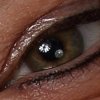Hi Guys!
I visited an portrait shooting course an I would like to do more of this.
The trainer showed us some lightning systems, which were all outstanding.
But in my house, I do not have an separate big room to built up such a system.
Now I am looking to buy an mobile one, as for beginning, it will be enough for me.
What I own: Eos 6D for better image quality as my 7D Mark II and some flashes: EX 550 and Nissin D688 II. And an ring flash from canon.
So I was adviced to get an three head system. Two with soft boxes and one for spot or background lighting.
My questions to you experienced users:
Should I buy an third flash? Which one to get? An cheaper one?
And how to control them? My old Yongnuo RF-602/C set (transmitter/receiver that is mounted under the flash) or an new Cactus set? Or another set from Yongnuo?
And which softboxes to buy? One, where an tripod holds the flash and the softbox, or one where the softbox is mounted on the flash itself?
Maybe someone finds time to answer my rookie questions.
Thank you a lot
Daniela
I visited an portrait shooting course an I would like to do more of this.
The trainer showed us some lightning systems, which were all outstanding.
But in my house, I do not have an separate big room to built up such a system.
Now I am looking to buy an mobile one, as for beginning, it will be enough for me.
What I own: Eos 6D for better image quality as my 7D Mark II and some flashes: EX 550 and Nissin D688 II. And an ring flash from canon.
So I was adviced to get an three head system. Two with soft boxes and one for spot or background lighting.
My questions to you experienced users:
Should I buy an third flash? Which one to get? An cheaper one?
And how to control them? My old Yongnuo RF-602/C set (transmitter/receiver that is mounted under the flash) or an new Cactus set? Or another set from Yongnuo?
And which softboxes to buy? One, where an tripod holds the flash and the softbox, or one where the softbox is mounted on the flash itself?
Maybe someone finds time to answer my rookie questions.
Thank you a lot
Daniela



